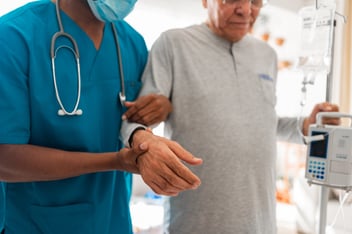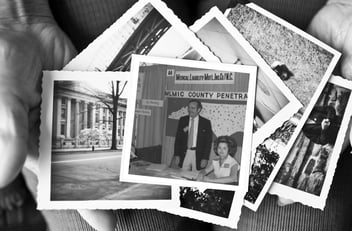National Falls Prevention Awareness Week: Ten Things You Can Do

Lori Atkinson names ten things you can do to raise awareness and reduce fall-related injuries.
I’m a faller. I’ve fallen repeatedly over the years and suffered contusions and broken bones. I inherited this risk trait. My parents, both in their mid-eighties, have fallen and broken a hip within the last several years. As a family, we now have a pretty good understanding of fall risk and prevention. That may not be true for many of your aging patients and their families.
According to The National Council on Aging (NCOA), falls remain the leading cause of injury and death for older Americans. Fall-related injuries come with significant economic and personal costs. According to CDC.gov, the cost of older adult falls each year is about $50 billion in medical expenses related to non-fatal fall injuries and $754 million related to fatal falls. They estimate that the cost of treating injuries caused by falls among older adults will increase to over $101 billion by 2030.
The rising number of injuries and deaths from falls among older adults can be addressed by healthcare professionals screening for fall risk and intervening to address risk factors such as the use of medications that may increase fall risk.
Healthcare professionals and organizations are encouraged to promote fall prevention education and screening activities during National Falls Prevention Awareness Week, September 23-27, to raise awareness about the impact of falls among older adults and offer practical fall prevention solutions.
Communicating fall risk
Failure to prevent falls and fall-related injuries is a top malpractice allegation against hospitals and senior living organizations. One contributory factor involved in these claims is a breakdown in communication with patients, residents, and families, specifically about the person’s fall risk, the preventability of fall-related injuries, and the person’s and family’s role in fall injury prevention.
Ten things your organization can do to raise awareness and prevent fall-related injuries
- Use tools such as NCOA’s Talking to Your Doctor About Falls to raise awareness among your aging population and families.
- Screen, assess, and intervene with older adult patients/residents to identify fall risk and mitigate fall-related injuries using tools such as CDC STEADI Clinical Resources.
- Discuss realistic expectations about fall reduction with patients, residents, and families using a shared decision-making and person-centered model. Not all falls are preventable, but many risks can be managed.
- Implement a comprehensive fall reduction program to reduce falls in your facility.
- Create a dedicated fall prevention team within your organization.
- Use scenario-based education and training to improve care team members' critical thinking skills for reducing falls.
- Implement team communication processes and tools such as SBAR, handoffs, huddles, and transfer forms.
- Evaluate and enhance team member assessment and monitoring skills, competency in equipment use, and documentation skills.
- Analyze fall events using tools to detect causal and contributing factors and redesign safer care processes.
- Track and trend fall events and fall-related injuries within your facility to identify performance improvement opportunities.
- Falls Prevention Awareness Week Toolkit (ncoa.org) helps raise awareness on preventing falls, reducing the risk of falls, and helping older adults live without fear of falling.
- CDC STEADI Clinical Resources includes materials to help healthcare organizations screen, assess, and intervene to reduce fall risk among their older patients
- National Institute on Aging Falls and Fractures in Older Adults: Causes and Prevention
Curi members can sign in and access our Mitigating Fall Risks in Senior Living Settings Toolkit and Reducing Hospital Patient Adverse Events Toolkit.
Curi members, if you have any questions about this topic, please call 800-662-7917 to speak with one of Curi Advisory's Risk Solutions experts.
SHARE THIS POST
About the Author
.jpg)
Through research, she identifies client needs and emerging healthcare risks, and develops education—articles, online resources, in-person education and webinars—with a focus on using data to help solve issues proactively versus reactively.
Lori is a frequent author and lecturer for physician, medical office, hospital, and senior living administrators and staff audiences.







.jpg?width=352&name=iStock-1171128932%20(2).jpg)

Comments